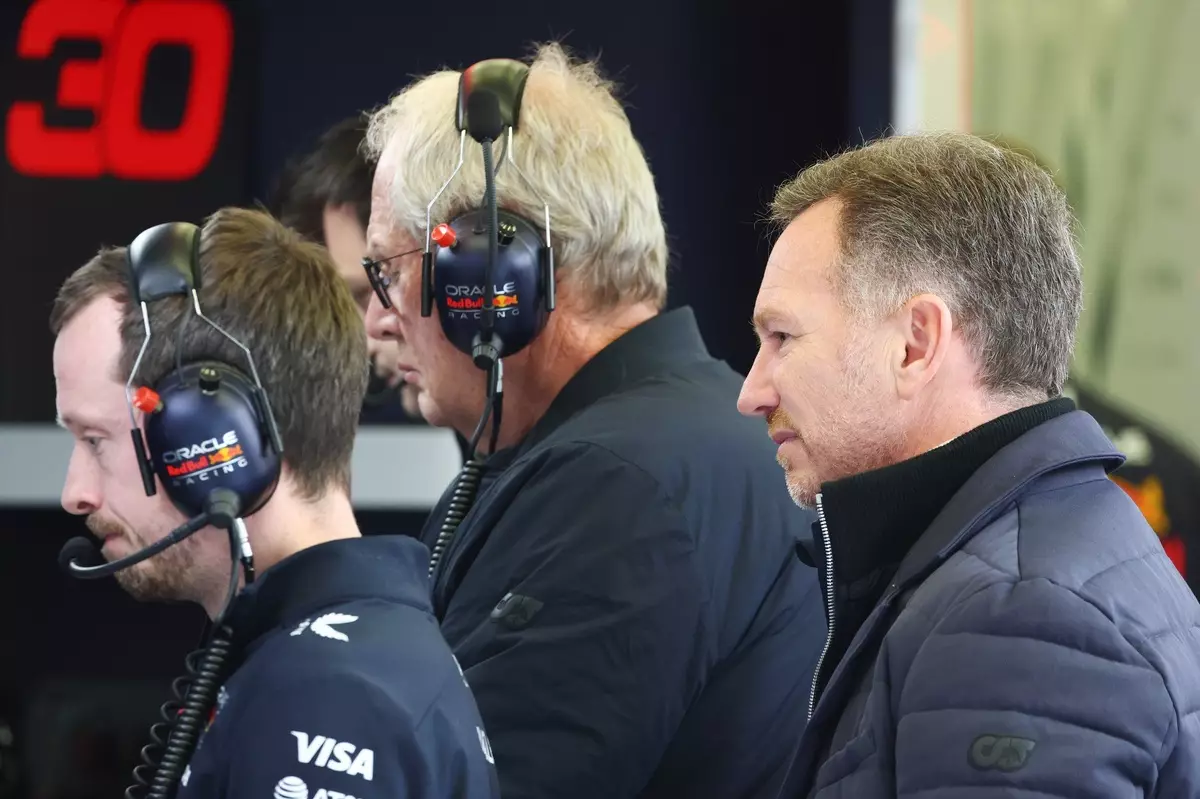In the high-stakes world of Formula 1, the battle not only lies on the race track but also within the confines of technology and innovation. As the 2025 season unfolds, Christian Horner, the team principal of Red Bull Racing, candidly reflects on the complexities faced by his renowned team. Despite the undeniable skill of Max Verstappen, the reigning world champion, Red Bull’s grip on the F1 landscape appears to be slipping. The once-unassailable reputation of the team has started to fray, revealing underlying issues that could haunt their ambitions moving forward.
The recent Japanese Grand Prix victory—a temporary victory, no less—belies a growing concern: the apparent disconnect between wind tunnel data and real-world performance. Horner’s assertion that he feels “like looking at two different watches” illustrates the profound challenge the team faces in aligning theory with practice. The technological divide has entered a crisis point, prompting emergency discussions among Red Bull’s leadership after a poor showing at the Bahrain Grand Prix.
Technical Tribulations
One of the most significant elements of Red Bull’s current predicament is the recurrence of technical issues that have plagued them since last season. It’s troubling to realize that the same discrepancies between simulated wind tunnel conditions and live track performance persist, suggesting that more than just surface-level tweaks are necessary. Horner’s insight that the current car, the RB21, shares faults with last year’s model demonstrates an urgent need for innovation.
His comments reveal a struggle with aerodynamics—specifically, the lack of grip and confidence needed by drivers to maintain speed in crucial mid-corner phases. This deficiency not only endangers the race outcomes but directly impacts Verstappen’s ability to perform at his highest level. Aerodynamics are the lifeblood of F1, meaning that any shortcomings in this area could prove catastrophic, undermining Red Bull’s competitive edge and allowing rivals like Mercedes and Haas to advance unchallenged.
The Data Dilemma
Data should be a Formula 1 team’s best friend, providing insights and clarity that fuel decisions ranging from car setup to tire selection. However, for Red Bull, accumulating track data has become a double-edged sword. While it has the potential to inform decisions, it is also highlighting the inconsistencies that have emerged between their wind tunnel outputs and circuit performance. During an era characterized by minute margins and razor-thin advantages, this discrepancy is nothing short of a crisis.
The implications of such a disconnect could ripple through the entire Red Bull operation. If the team’s tools do not align with on-track performance, then redesigns and adjustments can become misguided. Horner’s admission that they are essentially misled by their “tools” translates to critical engineering setbacks. The challenge of deciphering the cause and effect—why their computational models are failing to predict real-world results—is imperative for the team moving forward.
Looking Toward the Horizon
As the countdown to regulation changes begins, Red Bull finds itself at a crossroads. Currently, they are operating within the parameters defined by an aging set of regulations that do not lend themselves easily to groundbreaking evolution. Competitors are agile, seizing upon every fractional gain. For Red Bull, the road ahead is fraught with the need to innovate under a cloud of regulatory restrictions.
In light of this, Horner is clinging to the small glimmers of hope—the prospect of a new wind tunnel facility slated for introduction in 2027. However, until that opens, the team will continue to rely on their existing tools which, as Horner points out, still offer utility for another 18 months. Yet the reality remains that Red Bull must navigate this sticky patch with a combination of quick fixes and long-term strategic vision. The pressure to translate burgeoning data into meaningful improvements will only elevate as time passes, with every race presenting opportunities and pitfalls.
Red Bull’s presently tumultuous predicament illuminates the intricate tapestry that is Formula 1 racing, showcasing just how essential alignment between simulation and reality is for success. It is only through reconciling these discrepancies that they will rekindle the flames of their former dominance on the track.

